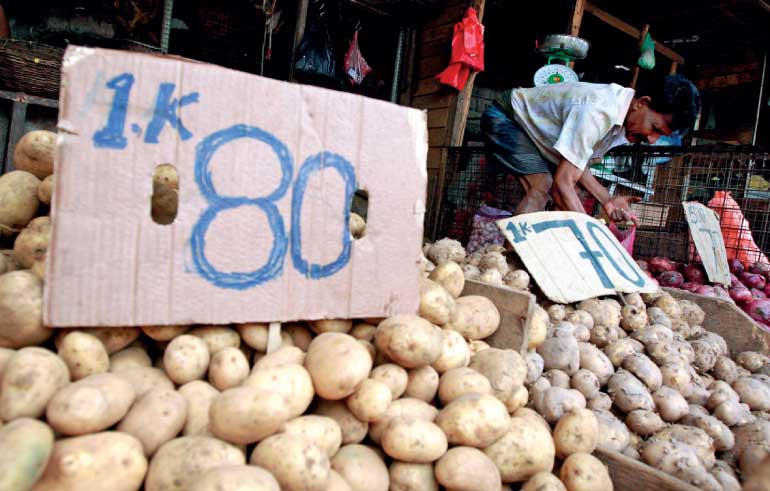Tuesday Apr 22, 2025
Tuesday Apr 22, 2025
Monday, 12 June 2017 00:06 - - {{hitsCtrl.values.hits}}

Rome: Global food commodity markets are well-balanced, buoyed by ample supplies of wheat and maize and rebounding production of oilseed products.
However, rising shipping costs and larger import volumes are set to lift the global food import bill to more than $ 1.3 trillion this year, a 10.6% increase from 2016, FAO said last week in its biannual Food Outlook.
The food import bills of least-developed countries, low-income food deficit countries and countries in sub-Saharan Africa are on course to rise even faster due to higher import volumes of meat, sugar, dairy and oilseed products.
Rising import bills are forecast for all food categories except for fish, for which growing domestic market demand in many developing countries is being increasingly met by robust growth in their local aquaculture sectors.
Global food commodity prices rose for the first time in three months in May, with the FAO Food Price Index – also released today – averaging 172.6 points during the month, 2.2% higher than in April and some 10% higher than May 2016.
FAO’s Food Price Index is a trade-weighted index tracking international market prices of five major food commodity groups: Cereals, vegetable oils, dairy, meat and sugar. Rising prices were reported in May for all of those groups except sugar.
Buoyant supplies loom for most food commodities
The Food Outlook offers fresh forecasts for the markets of major food commodities, all of which appear well-supplied on a global level even if there may be regional or national divergences.
International prices of wheat should remain stable, especially during the first half of the season, while near-record production of coarse grains will likely keep competition intense among the major exporters. Rice supplies are also forecast to remain ample, although reserves may decline as some exporters reduce their public stockpiles.
Worldwide oilseed production is expected to leap to an all-time high in 2016/17, due mostly to outstanding yield levels for soybean, allowing further replenishments of global stocks. First indications point to a well-supplied market also in 2017/18, further weighing on prices.
The report said growth in world meat production is expected to stagnate for the third year in a row, due mainly to an anticipated decline in China, which is expected to ramp up imports from the United States and Brazil.
Meanwhile, global milk output is expected to grow by 1.4% in 2017, led by a rapid expansion in India.
The Food Outlook also offers an analysis of the impact liquidity may have had on commodity price booms and slumps over the past 20 years, finding evidence that global credit conditions influence benchmark prices of maize, soybean and wheat.
FAO’s latest Cereal Supply and Demand Brief, also released today, anticipated a 2.2% contraction in worldwide wheat production year-on-year, nearly offset by a 1.4% expansion in global maize output – led by South America and Southern Africa – and a 0.7% increase in world rice production.
While aggregate global cereal output is now forecast to decline by 0.5% to 2,594 million tons, FAO also trimmed its May forecast for global cereal utilisation to 2,584 million tons.
With demand projected to fall short of production, cereal stocks are on course to stand at 703 million tons at the end of seasons in 2018, up marginally from the record high predicted for this year.
The inventory projections reflect substantial movements in China – which is drawing down its stocks of coarse grains while adding to its wheat and rice stores – but the overall picture is one of ample supplies.
Discover Kapruka, the leading online shopping platform in Sri Lanka, where you can conveniently send Gifts and Flowers to your loved ones for any event including Valentine ’s Day. Explore a wide range of popular Shopping Categories on Kapruka, including Toys, Groceries, Electronics, Birthday Cakes, Fruits, Chocolates, Flower Bouquets, Clothing, Watches, Lingerie, Gift Sets and Jewellery. Also if you’re interested in selling with Kapruka, Partner Central by Kapruka is the best solution to start with. Moreover, through Kapruka Global Shop, you can also enjoy the convenience of purchasing products from renowned platforms like Amazon and eBay and have them delivered to Sri Lanka.
Discover Kapruka, the leading online shopping platform in Sri Lanka, where you can conveniently send Gifts and Flowers to your loved ones for any event including Valentine ’s Day. Explore a wide range of popular Shopping Categories on Kapruka, including Toys, Groceries, Electronics, Birthday Cakes, Fruits, Chocolates, Flower Bouquets, Clothing, Watches, Lingerie, Gift Sets and Jewellery. Also if you’re interested in selling with Kapruka, Partner Central by Kapruka is the best solution to start with. Moreover, through Kapruka Global Shop, you can also enjoy the convenience of purchasing products from renowned platforms like Amazon and eBay and have them delivered to Sri Lanka.